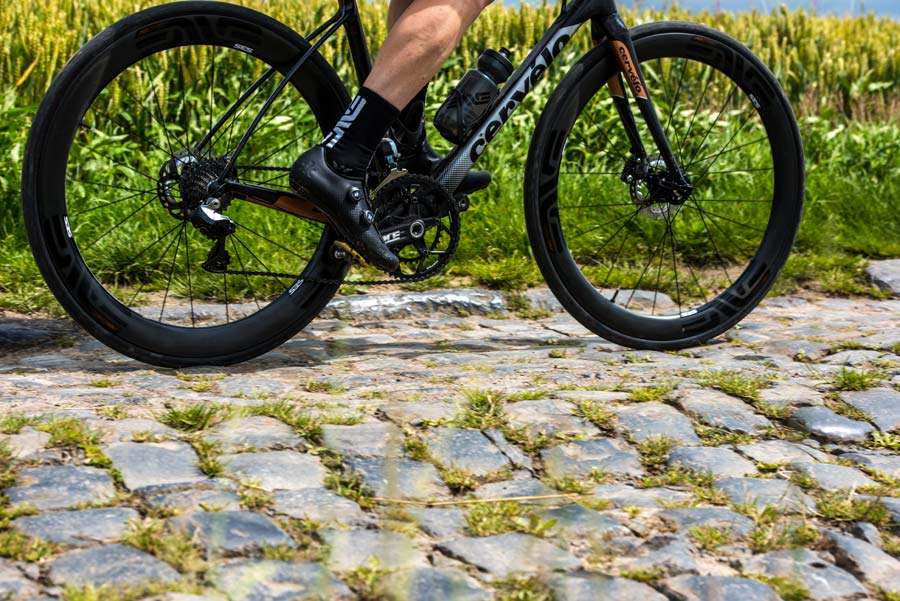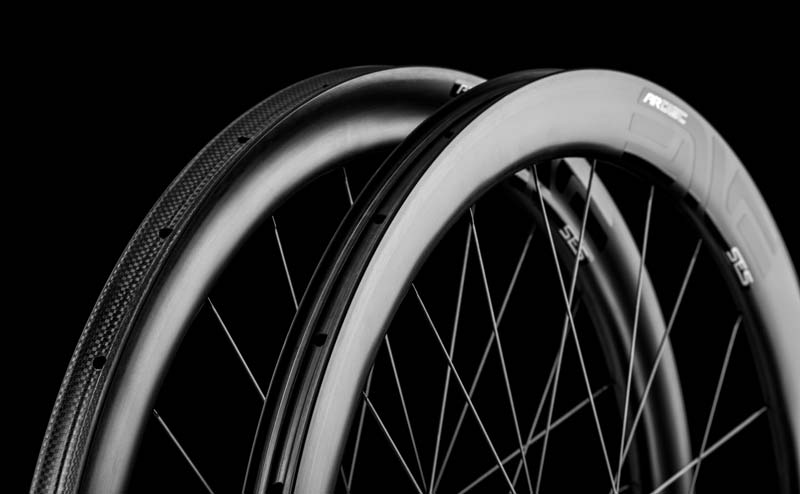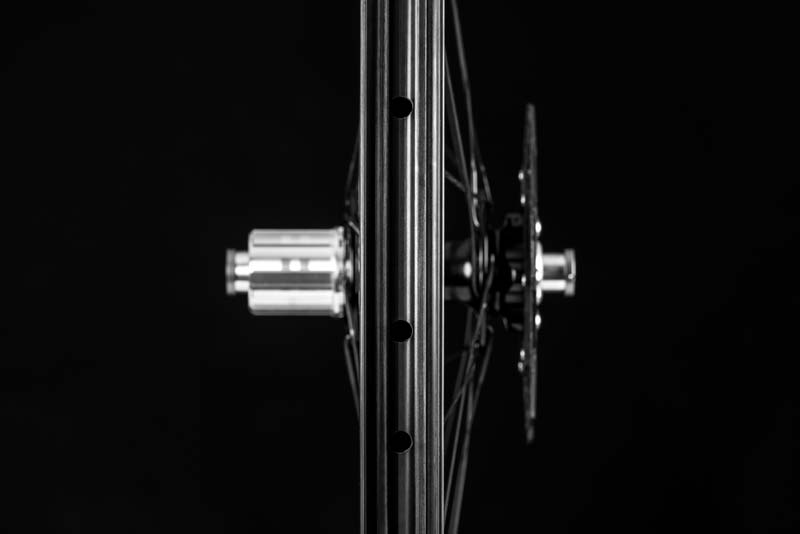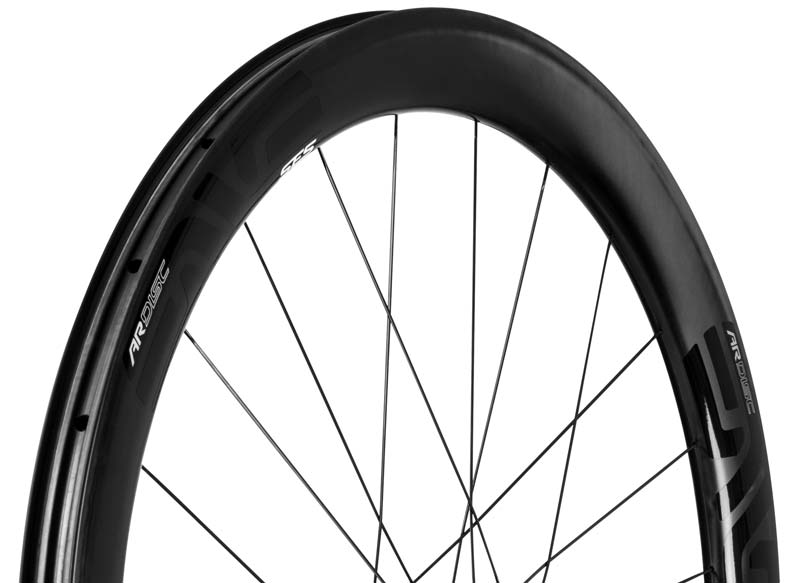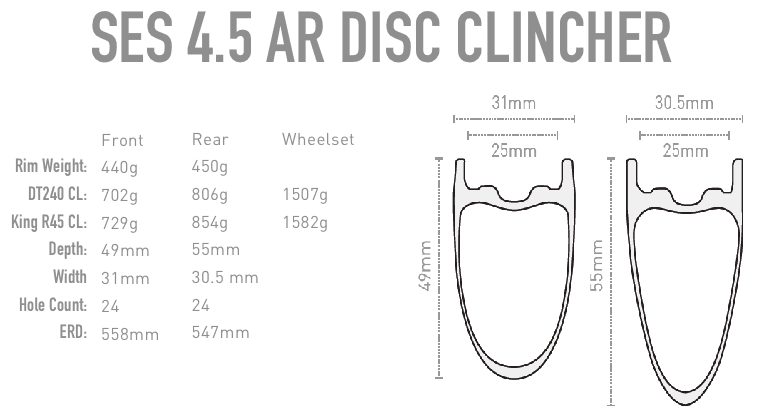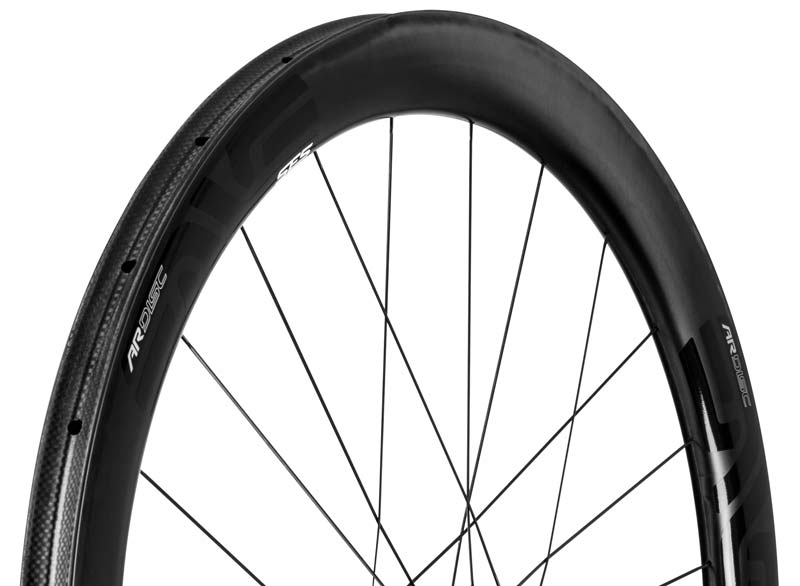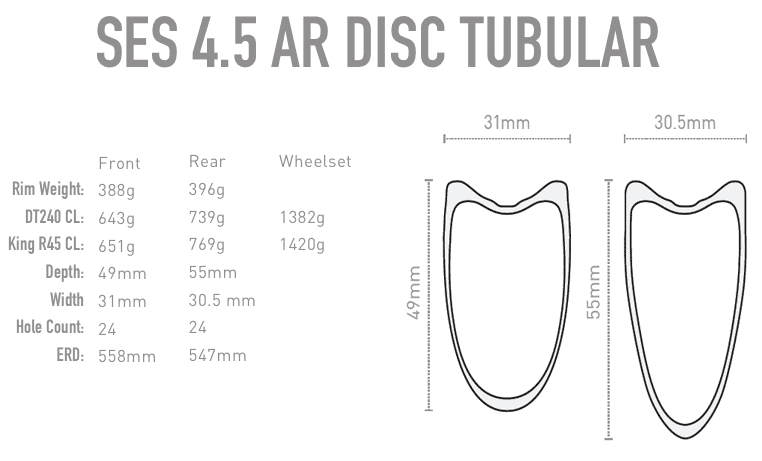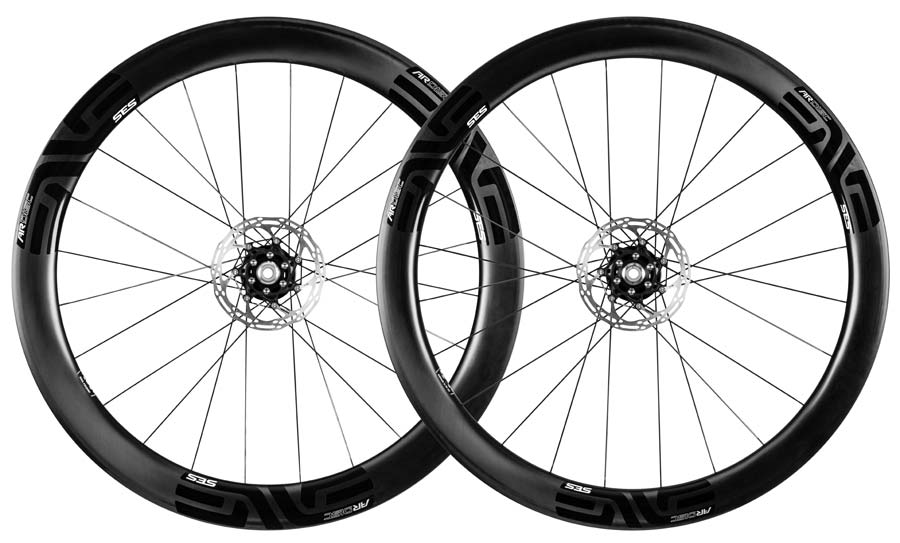Originally spotted in early prototype form under Team Dimension Data at Roubaix, ENVE has officially unveiled a new category of wheel: Wide Aero. The prototypes we spotted at Roubaix were rim brake tubulars paired with older Shimano calipers (the newer dual-pivot calipers didn’t have the clearance), but the consumer version will be a disc brake-only offering.
Called the ENVE SES 4.5 AR Disc, where “AR” stands for “all-road”, they’re an aerodynamically optimized wheelset for a 30mm wide tire.
“We were testing wheels on the spring classics (Flanders, Roubaix) and wanted to validate our wheels under teams like MTN-Qhubeka and Dimension Data,” ENVE’s marketing manager, Jake Pantone, told us by phone. “They were testing all of our current road wheels and everything held up fine for those cobbled courses, but at the end of the day they’d ask us “what’s the best wheel for us to use?'”
“We looked at the wider tires they were using, though, and basically said run whatever they wanted because with the 30mm Schwalbe prototypes they were using, the aero advantage was largely mitigated since our first generation SES wheels were designed around 23-25mm tires. So, when you put a 30mm tire on them, you take quite an aerodynamic hit because the larger tires cause early air separation, etc. But that got us thinking, why couldn’t we design a tire to have optimal aerodynamics with these larger tires?”
“We went to the wind tunnel and went through a couple of iterations and depths,” Pantone continued. “We ended up with a 49mm deep front and 55mm deep rear. Where it gets really interesting is in the width. The difference in shaping from front to rear is more visually dramatic, largely because they’re so much wider so it becomes more noticeable. At the widest point, the front is 31.2mm, and the rear is 30.5mm, and that sits at the top of the brake track. It’s disc brake specific, so there’s no actual brake track, but that’s about where that widest part is.”
They’re 25mm wide inside, which is about the same internal and external measurement as their M70 mountain bike wheel. However, the layup is 100% different rim than the mountain bike rims, and it’s 100% different than anything they’ve done on the road before, too.
It’s optimized for a 30mm tire on the tubular and 28mm on the clincher. Why smaller for the clincher? Because they say most tires end up measuring closer to 30 or even 31 once they’re actually mounted.
The clincher is tubeless ready and uses a hookless bead design, like their mountain bikes, which provides for a better tubeless feel and, they say, improves aerodynamics since the tire meets up to the rim more cleanly. But mostly, the hookless design is because they can build the rims to a tighter tolerance and get better tubeless performance out of it.
“People might think this is marketing hype, but I think they’ll find out, like we did, that they’re really fast,” Pantone said. “Another benefit is the improvement in rolling resistance and ride quality because of the higher air volume.”
It’s aimed more at the performance end of the spectrum, meant to go fast over rough roads, chip-sealed tarmac, and well-groomed gravel. The height of the rims and 30mm optimization means it’s not specifically meant for deeper, more aggressive backroads or cyclocross. Think spring classics racing where there’s a mix of fast pavement with intermittent sections of cobbles and broken pavement. And there’s an 80psi max pressure rating, so roadies easing into tubeless can still get the pressure up and experiment downward from there.
Pricing is in line with other SES wheels, starting at $2,900 for a set with DT Swiss 240 hubs. They start shipping at the end of August.
